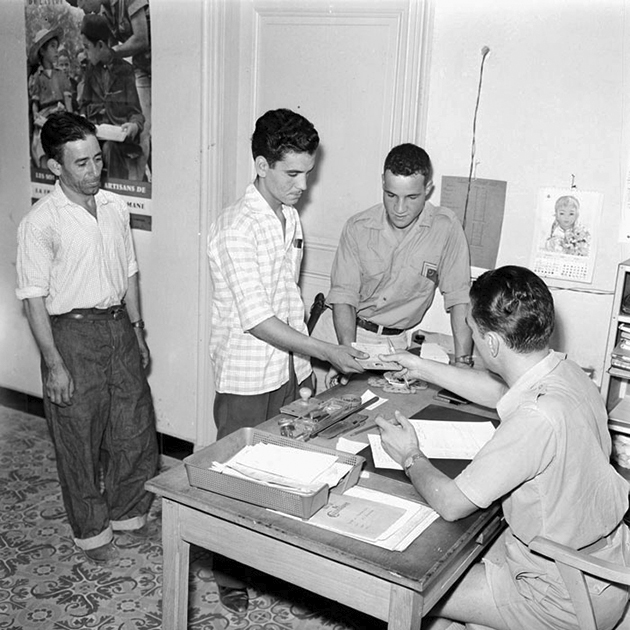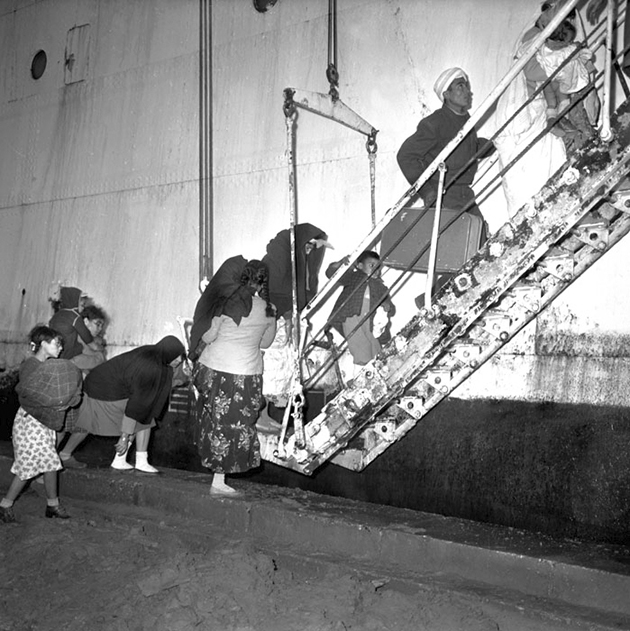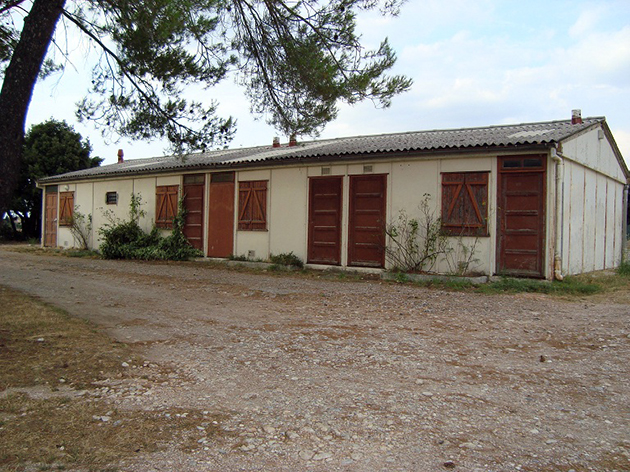The harkis, from Algeria to France
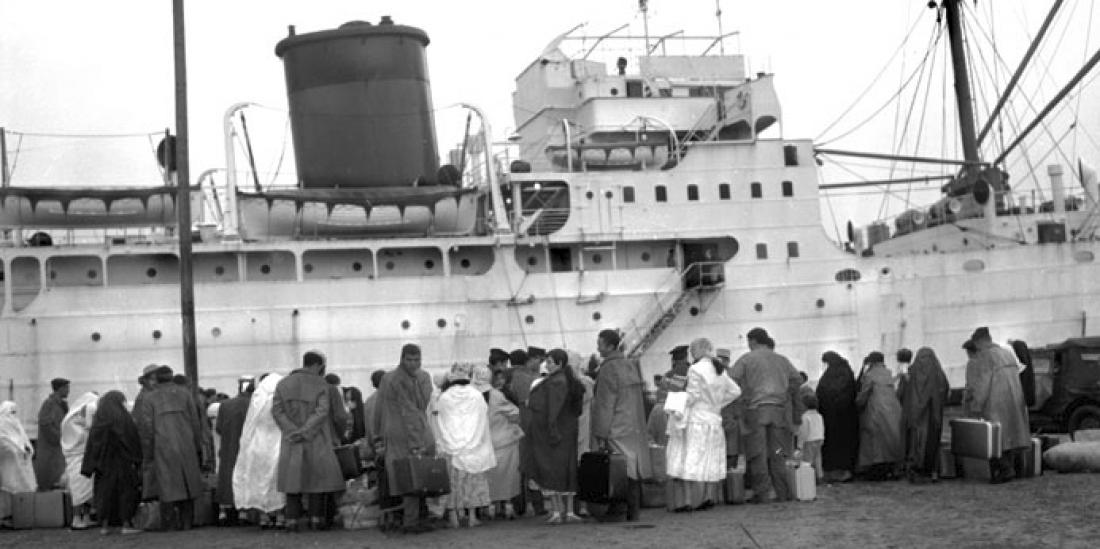
Auxiliaries of the French Army in Algeria, the harkis saw a painful end to the war of independence, suffering reprisals and being uprooted. Socially and economically marginalised, bearers of a long-concealed memory, the repatriated French Muslims and their descendants have long aspired to greater recognition. Their demands today form an integral part of Algerian War remembrance.
The harkis during the Algerian War: enlistment and engagement
After the outbreak of the Algerian uprising on 1 November 1954, the French Army command was quick to agree in principle to recruiting auxiliary troops. Five categories of civilian auxiliary training were progressively put in place, for participation in “law-enforcement operations” in a war of independence that was not openly described as such, at least not officially: the goumiers of the Mobile Rural Policing Groups (GMPRs), which subsequently became Mobile Security Groups (GMSs); the mokhaznis, tasked with protecting the Specialised Administrative Sections (SASs); the ’assas (guardians) of the Territorial Units (UTs); the Self-Defence Groups (GADs); and finally, the best known, the harkis – from the Arabic word harka, meaning “movement” – who were hired locally, initially by the day, then on renewable monthly contracts.
Harki applicants report to the Palestro office, in Kabylia, to sign a contract to enlist in the French Army. © ECPAD
So the harkis were just one element in the auxiliary training programme put in place by the French Army during the conflict. The term went on to refer to all auxiliaries, due to the sheer numbers of harkis compared to other units (63 000 harkis in January 1961). After the arrival in France of those described as “repatriated French Muslims”, the term “harki” came to refer to all those “French of North African descent” or “Muslims” who had sided with the French Army or French Government. Whether they were enlisted soldiers, conscripts, administrative auxiliaries dating back to the colonial order (bachaga, agha, caïd), civil servants or elected representatives, many were wrongly labelled “harkis”.
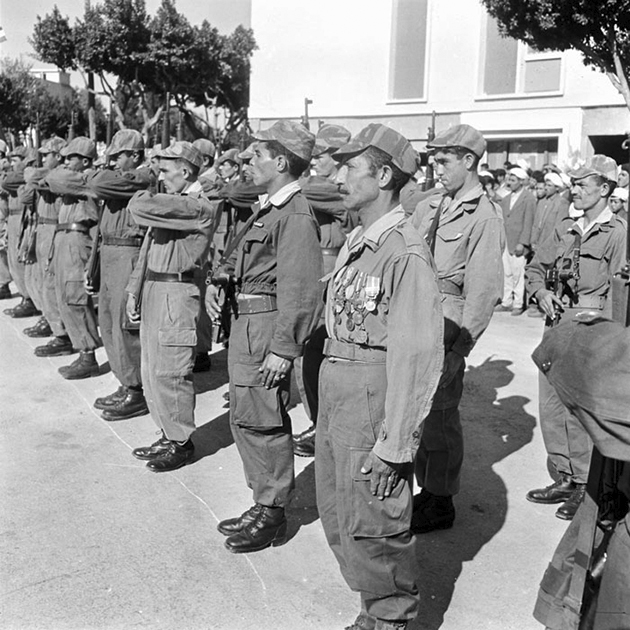
Harkis at the Hammam Meskoutine training centre, 17 miles from Constantine. © ECPAD/Marc Flandrois
Carrying on a long-established colonial tradition of employing native auxiliaries or regulars for colonial expansion from the 19th century to the First Indochina War, against a backdrop of deteriorating living standards for Algerian peasants and an asymmetrical war in which both sides sought to mobilise the rural population, either willingly or by force, with a variety of methods of engagement or enlistment, some 200 000 to 250 000 men – including some women – were recruited during the conflict.
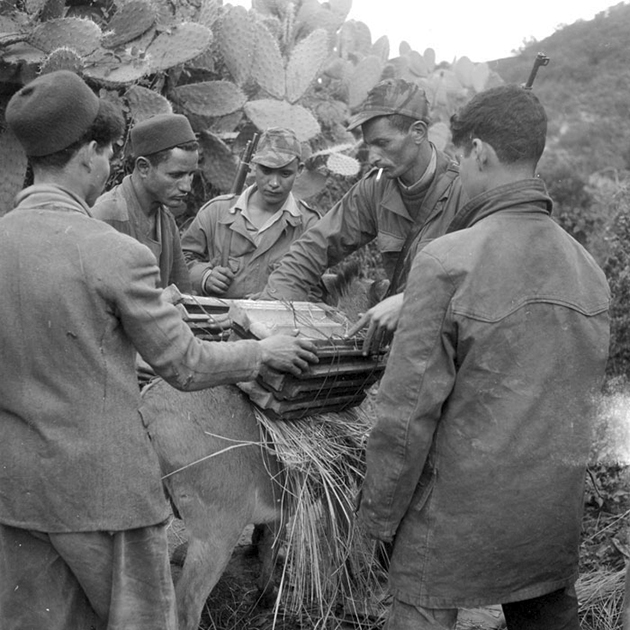
Harkis help villagers take down the roofs of their houses and load them onto the backs of mules to carry them to their new resettlement village. © ECPAD
The harkis after independence: transfer, reprisals and camps
After the signing of the Évian Accords, the former auxiliaries were rapidly discharged. Regarded as future Algerian citizens, they were disarmed and sent home, to return to civilian life. The many circulars and instructions issued in that spring of 1962 limited both enlistment in the army and the transfer of “Muslims at risk”, in a heavily restrictive plan that underestimated the probability of mass reprisals following independence. Nearly 25 000 – about 10% of the total – were allowed to settle in France, but the majority of former auxiliaries remained in Algeria. Even today, it is impossible to say precisely how many were victims of reprisals.
Before Algerian independence, special reception facilities, in the form of transit and reclassification camps, were organised to receive the former auxiliaries and their families. Bourg-Lastic (Puy-de-Dôme) and Camp du Larzac (Aveyron) opened in June 1962 and functioned until October that year. The two camps were soon overcrowded, with more than 11 000 people by July 1962 and a continual influx of new arrivals fleeing the violence in Algeria, so the French authorities decided to transfer the families to other camps, such as Rivesaltes (Pyrénées-Orientales), Saint-Maurice-l’Ardoise (Gard) and Bias (Lot-et-Garonne). By December 1964, nearly 42 000 people had passed through one of these camps, while more than 40 000 others avoided them. More like refugees than repatriates, they were required to reapply for French citizenship.
Embarking Harki refugees in the port of Bône. © ECPAD
Subject to supervision by the military and administrative management by the Ministry of Repatriates, the families faced precarious living conditions, being housed in tents, then huts, and the length of time they spent in the transit camps could vary from a few days to years.
The harkis in France: social controls, revolt and recognition
Most of the families of former auxiliaries found themselves scattered across the country, mainly in certain geographical areas: the mining, steelworking and industrial regions of northern and eastern France, the Paris area, the area between Lyon and Grenoble, and the Mediterranean coast. Yet thousands of others, regarded by the authorities as having potential problems integrating, or even as “unrecoverable” – the administrative term used at the time – were relegated to the margins, interned in the two disciplinary facilities of Bias and Saint-Maurice-l’Ardoise. Sixty-nine logging villages were built in rural areas, mostly in the regions of Languedoc-Roussillon, Provence-Alpes-Côte d’Azur and Corsica, with an average of 25 families per village, governed by special rules. Several dozen urban housing estates – like the Cité des Tilleuls in Marseille or the Cité des Oliviers in Narbonne – were purpose-built for harki families, who, in addition to the burden of the Algerian War, suffered the same social difficulties as other migrant populations. Finally, the former auxiliaries were provided with housing under the “Harki Programme” organised by Sonacotra and the SNCF. The circumstances varied from one place to another. This housing policy was accompanied by very real social controls. Successive bodies in charge of this population proposed special measures (housing, employment, education and training, etc.), advocating integration while paradoxically keeping countless families on the margins of society.
Hut in the former logging village of Montmeyan (Var). Photo credit: Faqsci – licensed under Creative Commons
In the early 1970s, a series of strikes and demonstrations involving the harki social group took place across France. But it was in 1975 that public opinion really became aware of the circumstances of the families of former auxiliaries, as protests were organised at the Bias and Saint-Maurice-l’Ardoise camps in May, which quickly spread to the logging villages of southern France and the urban housing estates. In view of this tense situation (hunger strikes, demonstrations, camp managers taken hostage, an Algerian politician taken hostage to demand freedom of movement to Algeria), the French authorities adopted short-term emergency measures to appease the widespread discontent of the former harkis and their families. In December 1976, the Saint-Maurice-l’Ardoise site was demolished and the families dispersed. The Bias camp was not renovated until several years later. The huts of the logging villages were pulled down or replaced. As time went by, the vast majority of families of former auxiliaries nevertheless succeeded in integrating into French society, with at times dramatic difficulties, as well as successes.
Yet their demands for compensation and recognition were not effectively taken into account until after 1991, when a new wave of protests took place, with riots in areas with a high concentration of families of former auxiliaries, demonstrations and roadblocks.
Successive laws and measures, put in place following tensions (1975, 1982, 1987, 1994, 2005, 2014, 2018), have marked the history of the harki social group. They are indicative of still exacerbated social issues (jobs, housing), issues concerning difficulties returning to Algeria for some, or concerning the political recognition of their history. Tributes and speeches by successive French presidents – Jacques Chirac (2001), Nicolas Sarkozy (2012), François Hollande (2016), Emmanuel Macron (2018) – have sought to address this socially sensitive issue.


